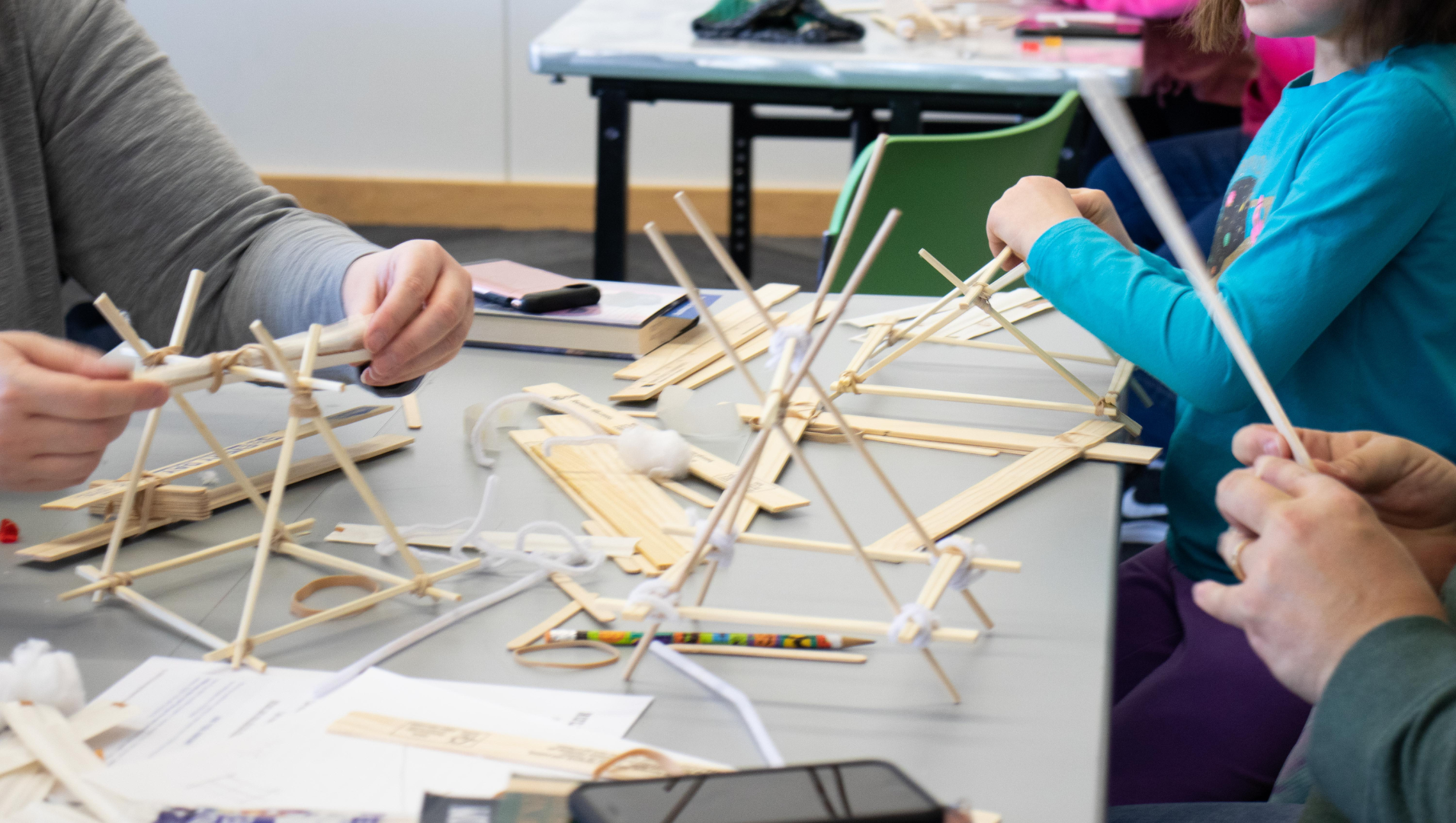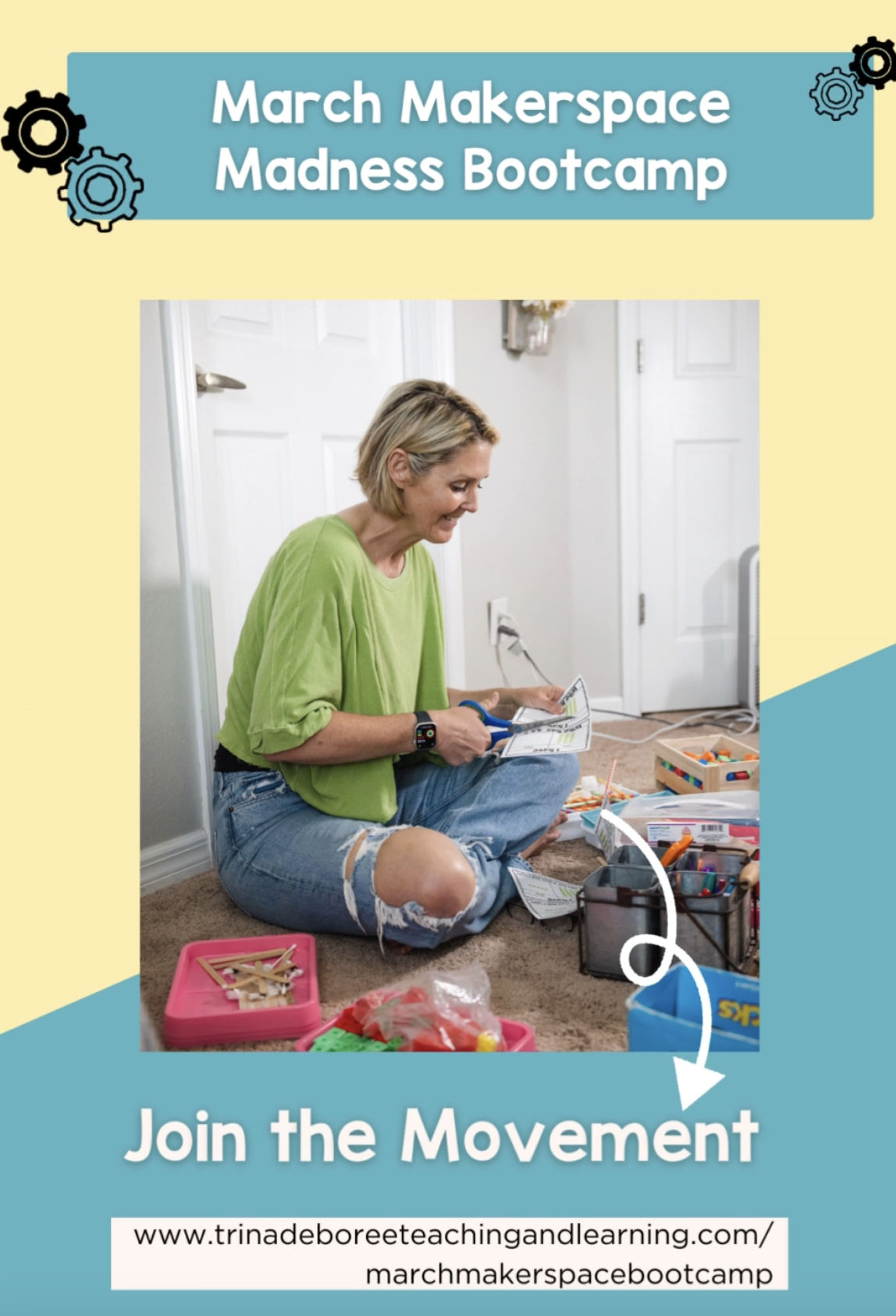OTT 234: How Can Teachers, and Media Specialists Create a Meaningful Makerspace on a Shoestring Budget?
Are you tired of seeing your students bored out of their minds in traditional classrooms where their common interests are ignored? Do you want to unleash their creativity and foster a love for hands-on learning?
Well, my friend, it's time to jump on the makerspace bandwagon! But hold on, before you start picturing an expensive high-tech wonderland, let me tell you a secret: creating a meaningful makerspace doesn't have to break the bank. In fact, with just a shoestring budget and some clever ideas, you can transform your school or classroom into a haven for innovation and tinkering. So grab your toolkit and get ready to embark on this exciting journey of starting a makerspace from scratch!
Understanding the Makerspace Concept: Collaborative Space
Think of a makerspace as a community hub for tinkering, experimenting, and creating. They're not just a revamped art room; they offer a haven where students can harness various tools to bring their imaginative concepts to life in the right space.
School Makerspaces have become the hot new trend in the world of innovation, creativity, and critical thinking. With the rise of the maker movement, individuals are embracing their inner inventors and carving out their own makerspaces in their classrooms to focus on a broad range of abilities. These collaborative spaces offer a unique environment where people from different backgrounds can come together to share ideas, materials, and expertise with a variety of maker equipment. Don't worry. You won't need 3 d printers, laser cutters, or other over-the-top tools and materials.
What sets makerspaces apart is their emphasis on collaboration. It's like a real-life version of The Avengers but with less spandex (hopefully). In this dynamic atmosphere, you'll find student engineers brainstorming with student artists, student coders partnering with student woodworkers, and all types of kids teaming up with kids who love science. The combination of diverse skills and perspectives creates an explosive mix that fuels innovation and pushes boundaries.
But a makerspace is more than just a physical space filled with tools and technology; it's a mindset. It's about breaking down traditional barriers between fields by encouraging cross-pollination of ideas. In this brave new world, everyone brings something unique to the table – whether it be technical know-how or creative flair – allowing for truly remarkable collaborations that spark inspiration and generate groundbreaking solutions for young people.
So jump on board the makerspace bandwagon! Embrace your inner inventor, collaborate with like-minded individuals, and unlock your creative potential in these collaborative spaces where imagination knows no limits.
While there are lavish, high-tech new things inside a community makerspace, the heart of a makerspace is about the mindset, not the money. And yes, you can set one up on a tight budget! Here's how to set up a new space inside your classroom, otherwise known as your makerspace:
Key Strategies for a Budget-Friendly Makerspace
Planning with Purpose
Your makerspace doesn't need a dedicated room. It's more about fostering a 'maker mindset' among students. Get them thinking, tinkering, and trying without fear. There are so many different ways to accomplish makerspace. I speak more about this inside of my Makerspace Bootcamp.
Use any space available – a movable cart, a closet, or even an outdoor area can be your community-operated workspace for all community members in your class, where new ideas are celebrated inside your maker culture.
Budget-Friendly Equipment and Supplies
Before splurging on the latest tech, assess what a group of students genuinely need inside of community centers- makerspace. Cardboard boxes, duct tape, art equipment, recycled materials, and basic craft supplies can be just as engaging as a 3D printer.
Reach out to the community for donations. Many times, parents and businesses have unused items perfect for your space.
Align Makerspace Activities with Learning Goals for Collaborative Learning
Integrate makerspace tasks with the curriculum. Whether it's a hands-on math challenge or a science experiment, ensure students learn while creating. Providing new opportunities for kids to learn will go a long way in motivating students in a collaborative work space.
Use your makerspace for projects that accentuate concepts taught in class, turning theory into practice.
Boost Participation and Excitement on a Budget
Encourage group work and challenges in the makerspace to foster collaboration early in the initial stages of using your makerspace. (Again, remember that makerspaces don't have to be in the media center or school library. Makerspaces can be in a tub that you pull out inside your classroom. Focus on the mindset and the maker culture.)
Instead of investing in expensive kits, create DIY challenges using household materials to bring creative learning to life to meet your funding goal.
Involve students in the setup and organization of the makerspace. When they feel a sense of ownership, their enthusiasm skyrockets! You can add organization to the problem-solving skills you hope to inspire inside maker spaces. I talk more about this in my Makerspace Bootcamp.
The Value of Budget-Friendly Makerspaces
A makerspace can effectively teach new skills without a hefty price tag. It's the creativity, collaboration, and passion that make these spaces transformative. You can open any Makerspace playbook and find collaborative projects for any age brackets. Even with limited funds, you can provide a dynamic learning environment that builds skills, fosters innovation, and nurtures a love for discovery and problem solving.






